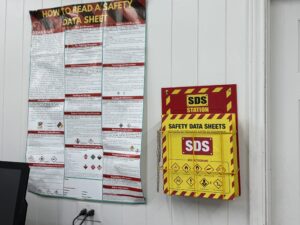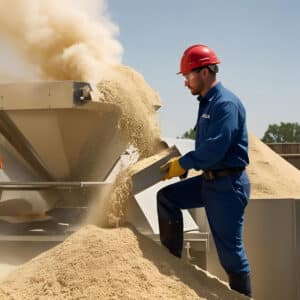We also offer
What Is Hazard and Operability Studies (HAZOP)?
HAZOP (Hazard and Operability Study) is a structured, systematic method used to identify potential hazards and operational issues in industrial processes—especially in high-risk sectors like chemical manufacturing, oil and gas, and pharmaceuticals.
HAZOP involves detailed analysis of process designs—whether for new systems or existing operations—to identify deviations that could lead to safety risks, equipment failure, or production downtime. It is a cornerstone of Process Safety Management (PSM) and helps ensure safe, reliable, and compliant operations.
How Does HAZOP Work?
A HAZOP study is led by a trained facilitator and conducted by a multidisciplinary team of engineers, operators, and safety professionals. The team uses guide words like No, More, Less, As well as, and Reverse to brainstorm possible deviations in each step of a process.
For example:
-
What happens if there is more pressure than expected?
-
What if the flow is reversed?
-
What if the temperature is too low?
Each deviation is evaluated for its potential consequences, causes, and safeguards, leading to a list of actionable recommendations to reduce or eliminate risk.
Why Is Hazard and Operability Studies (HAZOP) Important?
HAZOP studies are essential for:
-
Identifying hidden process hazards before incidents occur
-
Improving operability and process efficiency
-
Ensuring compliance with safety regulations (e.g., OSHA PSM)
-
Preventing fires, explosions, and toxic releases
-
Strengthening your overall safety culture
Rather than relying on assumptions, HAZOP forces teams to systematically challenge the process design to uncover risks that may not be obvious.
Key Steps in the Hazard and Operability Studies (HAZOP) Methodology
1. Form a Multidisciplinary Team
Include experts from process engineering, operations, maintenance, and EHS. A trained HAZOP facilitator leads the session.
2. Define the Scope and Objectives
Focus on specific process units or systems and establish clear safety and operability goals.
3. Review the Process in Detail
Use process flow diagrams (PFDs), piping and instrumentation diagrams (P&IDs), and relevant documentation.
4. Apply Guide Words
Use guide words (e.g., No Flow, More Pressure, Less Temperature) to explore potential deviations and what could go wrong.
5. Identify and Assess Risks
Discuss potential causes, consequences, safeguards, and risk levels for each deviation.
6. Develop Recommendations
Suggest design improvements, safety controls, alarms, or procedural changes to address the identified issues.
7. Document Everything
Keep clear, detailed records of findings, discussions, and agreed actions.
8. Implement and Follow Up
Assign responsibilities and timelines. Verify that actions are completed.
9. Integrate with Other Safety Processes
Link findings to your overall risk management, MOC (management of change), and audit systems.
10. Repeat as Needed
Revalidate HAZOP studies periodically or when there are process changes, equipment upgrades, or new regulations.
Common Hazard and Operability Studies (HAZOP) Guide Word Examples
| Parameter / Guide Word | No | More | Less | As well as | Part of | Reverse | Other than |
| Flow | no flow | high flow | low flow | deviating concentration | reverse flow | ||
| Pressure | vacuum | high pressure | low pressure | ||||
| Temperature | high temperature | low temperature | |||||
| Level | no level | high level | low level | ||||
| Time | sequence step skipped | too long / too late | too short / too soon | missing actions | extra actions | backwards | wrong time |
| Agitation | no mixing | fast mixing | slow mixing | ||||
| Reaction | no reaction | fast reaction / runaway | slow reaction | ||||
| Start-up / Shut-down | too fast | too slow | actions missed | wrong recipe | |||
| Draining / Venting | none | too long | too short | deviating pressure | wrong timing | ||
| Inerting | none | high pressure | low pressure | contamination | wrong material | ||
| DCS failure | failure | ||||||
| Maintenance | none |
Why Perform a Hazard and Operability Studies (HAZOP) Study?
Conducting a HAZOP assessment offers significant benefits:
-
Early detection of potential failures
-
Reduced risk of major accidents
-
Improved design decisions
-
Better regulatory compliance
-
Optimized operations and fewer shutdowns
It’s a proactive way to safeguard people, the environment, and your business.
Why Choose Prime Process Safety Center
At Prime Process Safety Center, we bring unmatched HAZOP expertise with real-world experience across chemical, petrochemical, and energy industries.
Here’s what sets us apart:
-
Experienced Facilitators: Experts in HAZOP, PHA, LOPA, and more
-
Tailored Studies: We align every analysis with your process and safety goals
-
Advanced Tools: We use the latest risk assessment techniques and digital documentation
-
Actionable Insights: You’ll receive practical, clear, and implementable recommendations
-
Full Regulatory Support: Meet OSHA PSM, EPA RMP, and API guidelines
-
Training & Knowledge Transfer: Empower your team with HAZOP training and best practices
-
Ongoing Support: We help with follow-up actions, revalidations, and integrating HAZOP findings into your larger safety framework
FAQ
1. What is a HAZOP study?
HAZOP, or Hazard and Operability Study, is a systematic method to identify and evaluate potential hazards and operational issues in industrial processes, especially where handling hazardous materials.
2. Why is a HAZOP study important?
It is crucial for ensuring process safety by uncovering potential risks and operational inefficiencies that might not be evident through regular safety assessments, thus preventing accidents and ensuring regulatory compliance.
3. When should a HAZOP study be conducted?
A HAZOP study should be conducted during the design phase of a new process or facility, and also when significant modifications are made to existing processes or equipment.
4. Who should be involved in a HAZOP study?
A multidisciplinary team including process engineers, operators, safety specialists, and a qualified HAZOP facilitator should be involved to ensure diverse expertise and comprehensive analysis.
5. How long does a HAZOP study take?
The duration depends on the complexity and size of the process being analyzed. It can range from a few days to several weeks.
6. What are the main steps in a HAZOP study?
Key steps include defining the scope, reviewing process documentation, applying guide words to identify potential deviations, assessing risks, and recommending mitigation measures.
7. What are 'guide words' in HAZOP?
Guide words are prompts used in HAZOP to systematically explore potential deviations. Examples include "No", "More", "Less", and "Reverse".
8. How are the results of a HAZOP study used?
The findings are used to make design changes, enhance safety measures, modify operational procedures, and inform training, contributing to overall process safety management.
9. What happens if a HAZOP study identifies a significant risk?
Significant risks require immediate attention, which may involve redesigning the process, implementing additional safety controls, or altering operational procedures to mitigate the risk.
10. Is a HAZOP study a one-time requirement?
No, it should be revisited periodically, especially when there are changes in the process, technology, or regulations, to ensure ongoing safety and efficiency.














